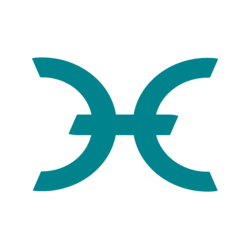Direct bank cooperates with crypto platform
Europe’s largest digital bank N26 is jumping on the crypto bandwagon and will henceforth offer its customers access to around 200 cryptocurrencies. The partner is Austrian FinTec unicorn Bitpanda. According to a study conducted by N26 among 16,030 respondents in Austria, Germany, France, Italy and Spain, 40 percent are already either actively trading or interested in investing. Due to the high demand, the online bank is now introducing a product that allows trading of around 200 cryptocurrencies in its in-house app. N26 customers whose identity and eligibility have been successfully verified can access N26 Crypto in the bank app via the “Trading” section in the new “Finance” tab. The offering will initially launch only in Austria, but is expected to be expanded to other core markets in the coming six months.
Valentin Stalf, founder of N26, does not see the current drop in the share price as an indication of a lack of future viability. In an interview with Kronen Zeitung, he admits, “Of course, we have seen a difficult year for crypto,” but the demand for cryptocurrencies remains high. He believes “that there will also be cryptocurrencies in the future and that customers will invest there as well.” For him, crypto products are often the entry point for money or wealth investment. “Crypto products are the first experience with trading for many people,” Stalf said, “We see that this is a good asset class to introduce people to the topic.” Stalf takes a critical view of the savings book, which is still widespread in Central Europe, as a form of investment in light of rising inflation: “Actually, people should think much harder about whether they can’t make other provisions for their old age.”
Energy problem, regulations
Stalf does see the energy problem of the crypto industry, but puts it into perspective that one has to look at the individual cryptos and their specific mining variant here. For example, ETH will be able to reduce its energy consumption by 99.5 percent after the merge. Nevertheless, he believes “that we would also need more transparency in the crypto sector over the next few years in terms of sustainability,” but cannot change much as an individual banking institution. As far as regulations are concerned, Stalf is happy about the pushes in this direction: “Of course, that’s always good because then I have competition and uniform standards. Clear European regulation in the crypto area is of course beneficial for customers, but at the same time it is also beneficial for the institutions.”
In this context, the regulatory framework known as Markets in Crypto Assets (MiCA), which was adopted at the beginning of July and is scheduled to come into force at the end of 2023, is worth mentioning. Part of MiCA is, among other things, the licensing requirement for companies that want to issue and sell cryptocurrencies in the EU. With this license, firms can serve their clients in all 27 member countries. In addition to the licensing requirement, there is a reporting requirement from the regulators of each member state to the European Financial Market Authority (ESMA): they must report any large operator they have authorized. This is a significant step forward from the status quo, according to which providers only have to prove to a national supervisor that they have adequate control mechanisms in place to prevent money laundering.

